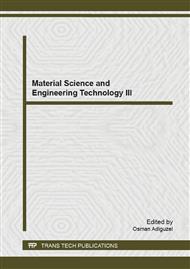p.368
p.373
p.379
p.385
p.393
p.397
p.402
p.406
p.412
Surface Roughness Optimization in Turning Operation Using Hybrid Algorithm of Artificial Bee Colony with RSM
Abstract:
For cost reduction and quality improvement of machining products, optimum output machining parameters such as material removal rate, tool wear ratio and surface roughness is very essential. Moreover, these output parameters are strongly depends on the precision of the machine tool as well as the input machining parameters. In this paper, a hybrid model of Artificial Bee Colony (ABC), which is motivated by the intelligent behavior of honey bees with Response Surface Methodology (RSM), has been developed for optimizing the surface roughness of stainless steel during turning operation. The predicted optimal value of surface roughness of stainless steel is further confirmed by conducting supplementary experiments. Finally, the performance of this algorithm is evaluated in comparison with desirability analysis. The performance of ABC is at par with that of desirability analysis for different parametric conditions.
Info:
Periodical:
Pages:
393-396
Citation:
Online since:
April 2015
Keywords:
Price:
Сopyright:
© 2015 Trans Tech Publications Ltd. All Rights Reserved
Share:
Citation:


